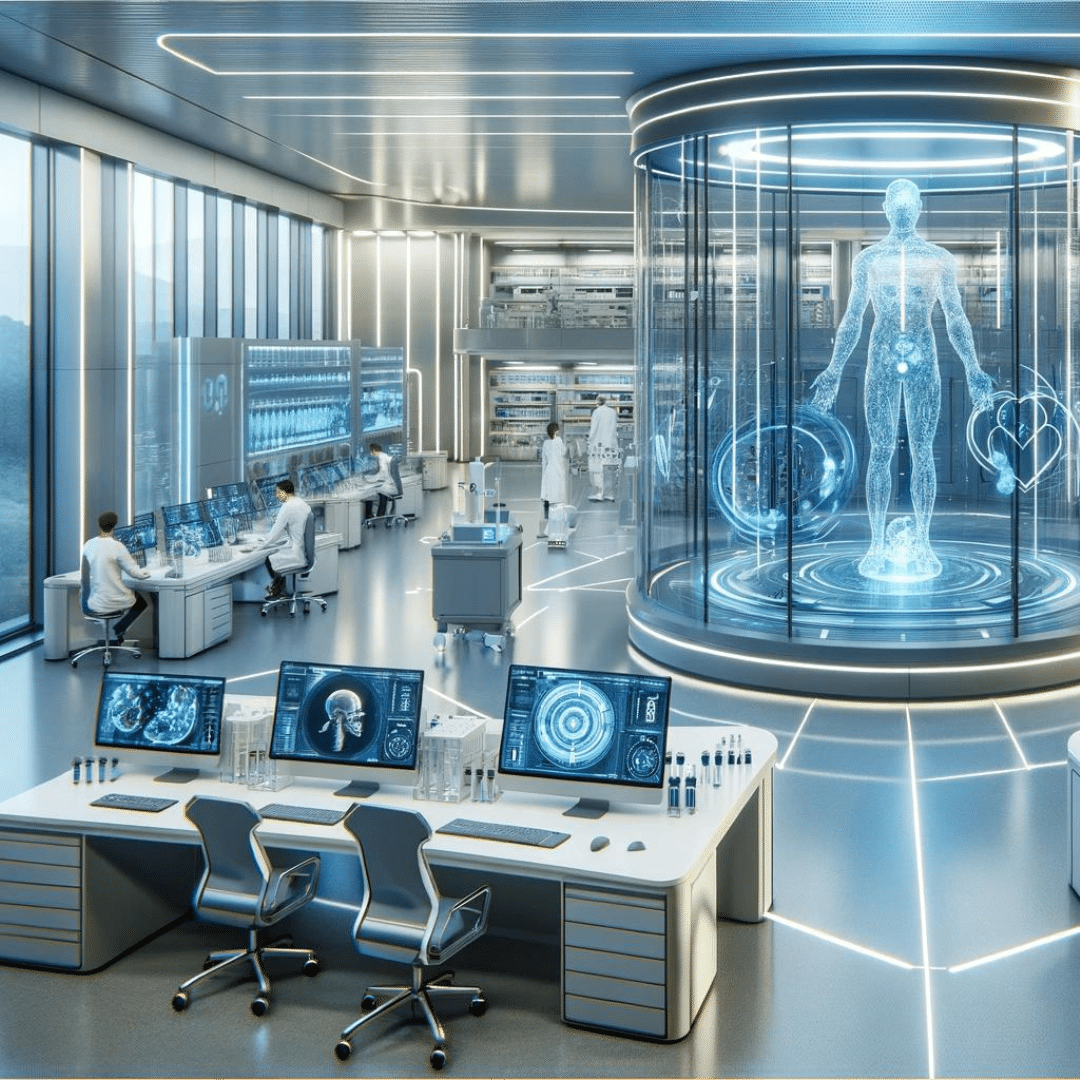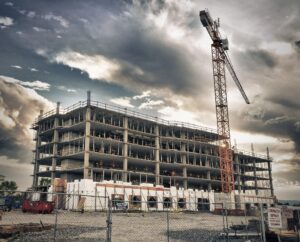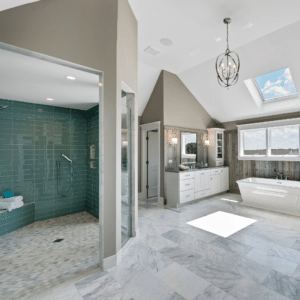The rapidly evolving landscape of visionary design in future medical research architecture is setting new benchmarks in healthcare innovation. As we delve into the integration of cutting-edge technologies and adaptable designs, professionals in the field will find compelling insights into how these advancements can significantly enhance their projects and operational efficiency.
Visionary design in future medical research architecture emphasizes three key components. First is the integration of advanced technologies like AI and VR to create dynamic and efficient research environments, next is the design of flexible spaces that adapt to various technological advancements, and lastly is the strategic architectural considerations that promote community and collaboration among medical professionals. This approach not only meets current needs but also sets new benchmarks for innovation and operational efficiency in healthcare facilities.
- Integrating Cutting-Edge Technologies in Medical Architecture
- Designing Flexible and Adaptive Spaces
- Enhancing Community and Collaboration Through Thoughtful Architectural Design
- Ensuring Robust Security and Efficient Data Management
- Supporting Comprehensive Research with Enhanced Services
- Economic Impact of Being a Medical Research Hub: Future Medical Research Architecture
- The Future Is Now in Medical Research Architecture
Key Takeaways:
- Advanced technologies like AI and VR are transforming medical research facilities by enhancing diagnostics and training, leading to more dynamic and efficient environments.
- The adaptability in the architectural design of medical research facilities ensures they can keep pace with technological advancements, maintaining their relevance and effectiveness over time.
- Thoughtful architectural designs that facilitate both individual and collaborative research can significantly boost productivity and foster a thriving community of medical professionals.
- Incorporating advanced cybersecurity measures and physical security protocols is essential to protect sensitive data and maintain the integrity of research in medical facilities.
- Providing cutting-edge IT infrastructure, administrative assistance, and advanced equipment creates a self-sufficient and conducive environment for groundbreaking medical research.
- Medical research hubs can drive local economic growth by attracting high-value professional activities and stimulating job creation and business revenues.
With the potential to radically transform medical research facilities, this article explores the extensive benefits that visionary design principles offer. Stay tuned as we dig deeper into how these innovations not only meet current needs but also anticipate future challenges in medical research infrastructure.
Integrating Cutting-Edge Technologies in Medical Architecture
Future medical research architecture is increasingly reliant on advanced technologies like artificial intelligence (AI) and virtual reality (VR) to revolutionize both diagnostic processes and medical training. AI optimizes disease detection by analyzing scans for patterns beyond human perceptibility, facilitating earlier and more precise diagnoses. VR advances medical education by enabling students to practice surgical procedures in 3D simulations, fostering skill and confidence without real-world risks. Together, these technologies improve the efficiency and accuracy of medical professionals, redefine interaction within medical spaces, and lead to better patient outcomes, exemplifying a transformative shift in healthcare research and practice environments.
Designing Flexible and Adaptive Spaces
Adaptability is central to the design of future medical research facilities, which must be prepared to accommodate rapidly evolving technologies. The use of modular designs and adjustable infrastructures enables these spaces to adapt seamlessly to new advancements, ensuring they remain relevant and cutting-edge. This flexibility not only future-proofs these hubs but also keeps them at the forefront of research innovation. By designing for change, medical research facilities are ready to incorporate and leverage the next generation of technological breakthroughs, maintaining their status as leaders in the field.
Enhancing Community and Collaboration Through Thoughtful Architectural Design
Future medical research architecture is deliberately designed to enhance collaboration by creating versatile spaces that support both individual and group projects. Facilities are equipped with shared labs, communal tech hubs, and flexible meeting areas to foster a community of shared knowledge. Strategic architectural features like modular walls and mobile equipment ensure adaptability, allowing spaces to be reconfigured as research needs evolve. This integration of flexibility and permanence caters to the dynamic demands of medical research, accommodating rapid technological advancements and varied research activities. Overall, such thoughtful architectural design not only promotes collaboration but also prepares the infrastructure to meet both the current and future needs of the research community.
Ensuring Robust Security and Efficient Data Management
Ensuring robust security and efficient data management is crucial in the architecture of future medical research facilities. These buildings handle highly sensitive data, including patient records and critical research materials, necessitating advanced cybersecurity measures alongside stringent physical security protocols. Architectural designs are thoughtfully engineered to incorporate these protective layers seamlessly. This integrated approach to security helps prevent data breaches and ensures the integrity and confidentiality of vital research information, making these facilities secure hubs for scientific advancement.
Supporting Comprehensive Research with Enhanced Services
Modern medical research facilities are designed to significantly enhance research capabilities through comprehensive support services. Equipped with state-of-the-art IT infrastructure, administrative assistance, and advanced equipment, these facilities create a self-sufficient environment that is attractive to and retains top-tier talent. Such comprehensive support is essential for fostering a conducive ecosystem for groundbreaking research and innovation. By integrating these services, medical research facilities enable researchers to focus on their work without logistical constraints, thereby accelerating scientific discovery and technological advancements in healthcare.
Economic Impact of Being a Medical Research Hub: Future Medical Research Architecture
Investing in future medical research architecture can catalyze economic growth in local communities. Medical research hubs not only attract high-value professional activities but also stimulate local economies through job creation and increased business revenues. A prime example is the New Jersey BioScience Center in North Brunswick. This hub has transformed the area into a nexus for biotechnology and pharmaceutical companies, drawing significant investments and enhancing the local job market. Such developments showcase how medical research facilities can serve as economic engines, promoting both innovation and regional economic development.
The Future Is Now in Medical Research Architecture
Visionary design in future medical research architecture is not just about buildings; it’s about building the future of healthcare. As we look towards the horizons of medical research and patient care, the integration of innovative architectural design with cutting-edge technology presents a promising pathway to transformative healthcare solutions.
For those looking to be at the forefront of future medical research architecture, partnering with a firm that understands the intricate balance between technology and functional design is crucial. Explore how our solutions at Guzzo Architect can help you build not just facilities but the future of medical research itself. Contact us today at 201-939-1446 and let’s build the future of healthcare together.
How can future medical research architecture contribute to environmental sustainability?
Future medical research architecture can significantly contribute to environmental sustainability by incorporating green building practices and sustainable materials. Designs often include energy-efficient systems, such as solar panels and smart HVAC systems, to reduce energy consumption. Additionally, the use of recycled materials and sustainable construction methods can minimize environmental impact. Rainwater harvesting and green roofs can also be integrated to promote water conservation and improve insulation. By prioritizing sustainability, these facilities not only support health research but also advance environmental responsibility.








